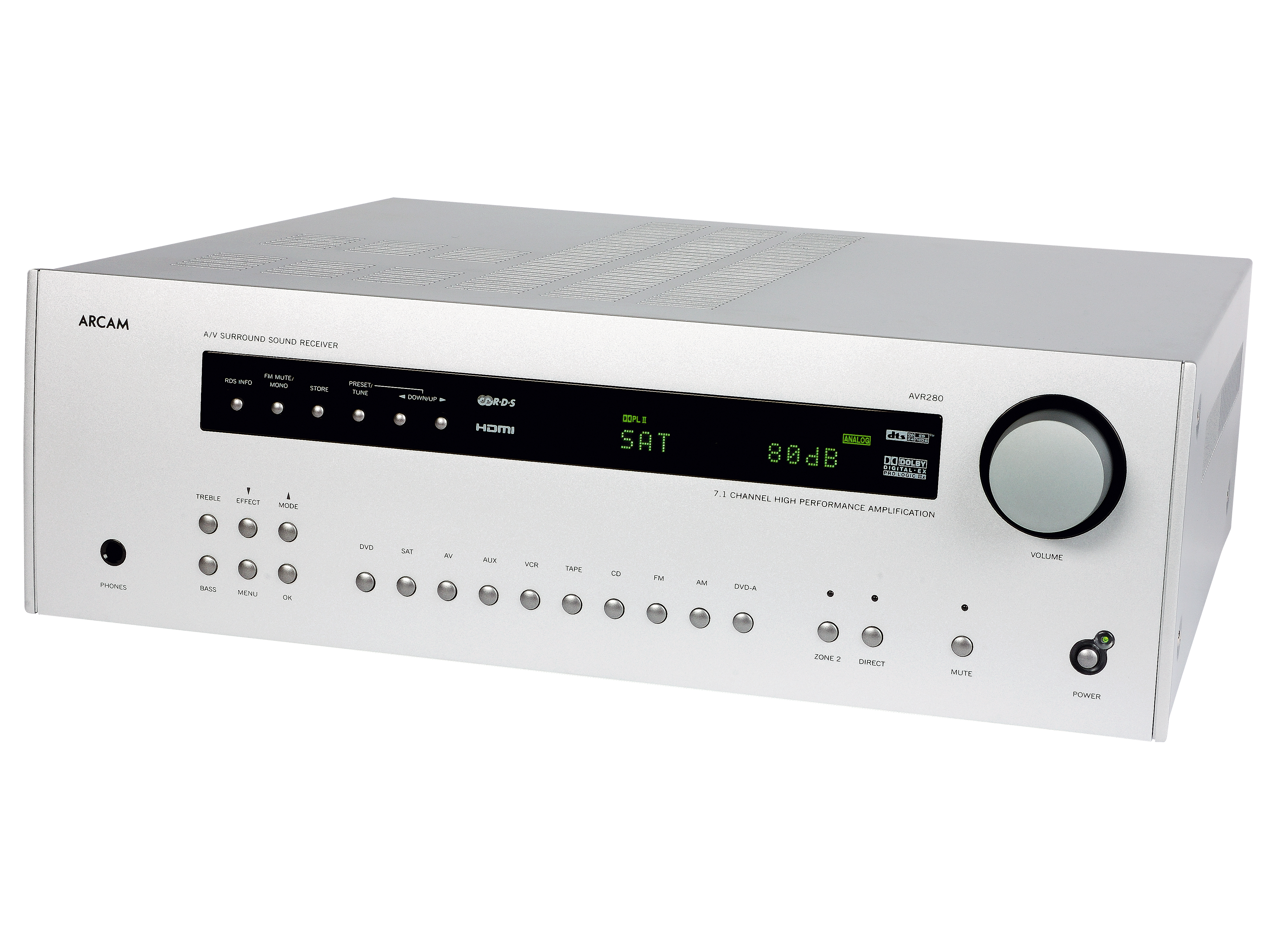TechRadar Verdict
Delivers the kind of performance that makes living without some of the fancier features worthwhile
Pros
- +
Top-notch multichannel and stereo sound
- +
Build quality
- +
Remote
Cons
- -
No HDMI scaling, auto-setup or RoomEQ
Why you can trust TechRadar
How many home cinema fans with mid-priced AV receivers ever bother to upgrade with a multi-channel power amp? According to Arcam's Geoff Meads, very few indeed - which goes some way to explain what looks like an AVR-350 'lite' arriving on our test bench.
This is Arcam's DiVA AVR-280 - shaved of features (such as pre-amp outputs) but a substantial £300 lighter on the wallet and promising all the sonic magic of its acclaimed bigger brother. As Mr Meads had to enlist a team of wild horses to part me from the AVR-350 review sample, the AVR-280 looks dangerously priced. Dangerous for my credit card.
Okay, so there are no pre-amp outputs save for the subwoofer but, as much as I searched for functional and operational differences, that really is about it.
The AVR-350 is already a minimalist design, eschewing RoomEQ, auto-set up and video scaling. The AVR-280's HDMI connections are still pure pass-through switches - albeit with auto source detection - and the user interface is mono block text circa 1995 vintage AV amp. Hey-ho.
If you want to use a DiVA receiver at the heart of a multiroom install, however, it is bristling with custom install features, including RS-232, 12V triggers, IR pass through, RC-5 codes and Scart control in RGB mode.
Beneath the hood the differences are just as subtle. The sexy Crystal Semiconductors DSPs, Wolfson DACs and Burr Brown op amps are all present and correct, and the circuit design and base-mounted cooling system is equally sumptuous.
There have been subtle changes to Arcam's Mask of Silence and the layout of the Stealth Mat material, but the largest change is a notably smaller transformer and different power supply arrangement. This translates into fewer watts at the business end of the speaker terminals. Power is rated at 80W to seven channels. You can still use the two rear-back channels to bi-amp the front main pair if desired.
Sign up for breaking news, reviews, opinion, top tech deals, and more.
The AVR-280 comes with Arcam's latest RC100 remote control, which is smaller and easier to navigate than the one originally supplied with the AVR-350, and has a far greater library of IR codes, including the likes of Sky HD.
It's so good, in fact, that the CR100 now ships with the AVR-350 as well. On paper, the AVR-280 is some 20 per cent cheaper than the AVR-350 for the loss of only about 5 per cent of the features and benefits. Interesting indeed....
The AVR-280's set-up is swift, logical and results in a sound that leaves your stomach upside down and your jaw on the floor. Hang on, I remember saying that before....
Like its bigger brother this receiver is a class performer. The sound is immediate and clean with very little hiss or background noise thanks to more Stealth Mat than your average spy plane. Bass is deep and the overall balance has an enormous presence and scale.
In our lab, the model delivered 105W across five channels, and 130W in stereo mode (into 8ohms). Multichannel mixes are simply laid bare in the room and the sound all but leaps out of the speakers, creating the wonderful illusion of a much larger listening environment.
And the AVR-280 is not simply an all-action hero. Dialogue is smooth and silky with superbly natural tone and none of the cuppy or chesty character some receivers can add to the mix. Low-frequency effects elevate well above simple bass-boom and really create the ambience the director intended.
The tyrannosaurus foot steps in Jurassic Park will have you trousers flapping and heart beating in equal measure and the subterranean heartbeat thump through the opening of Leon simply puts the tension level meter into the red.
The AVR-280 goes impressively loud with grace and dignity, keeping its composure and silky balance while others at the price point would get shouty and acerbic.
But it is here that the more expensive AVR-350 pulls its first ace out of the box, going deeper, louder and producing a more coherent acoustic picture when the going gets the fruity side of 100dB. Even though the smaller power supply of the AVR-280 begins to run out of puff, it does so gently. The sound gets more dense and congested rather than falling into distortion.
Overall, Arcam's hi-fi heritage shines through. In stereo direct mode the analogue amplification is rich and fulsome with just enough top-end sparkle to give the sound a real three-dimension hi-fi soundstage. The only other model likely to rain on the AVR-280's parade in this respect is, you guessed it, the AVR-350.
Arcam's AVR-280 is a superb AV receiver. As long as you don't mind living without HDMI scaling and toys like RoomEQ, it is comfortably amongst the elite integrated designs for both movies and music at this price point. Well worth auditioning one.
Tech.co.uk was the former name of TechRadar.com. Its staff were at the forefront of the digital publishing revolution, and spearheaded the move to bring consumer technology journalism to its natural home – online. Many of the current TechRadar staff started life a Tech.co.uk staff writer, covering everything from the emerging smartphone market to the evolving market of personal computers. Think of it as the building blocks of the TechRadar you love today.
